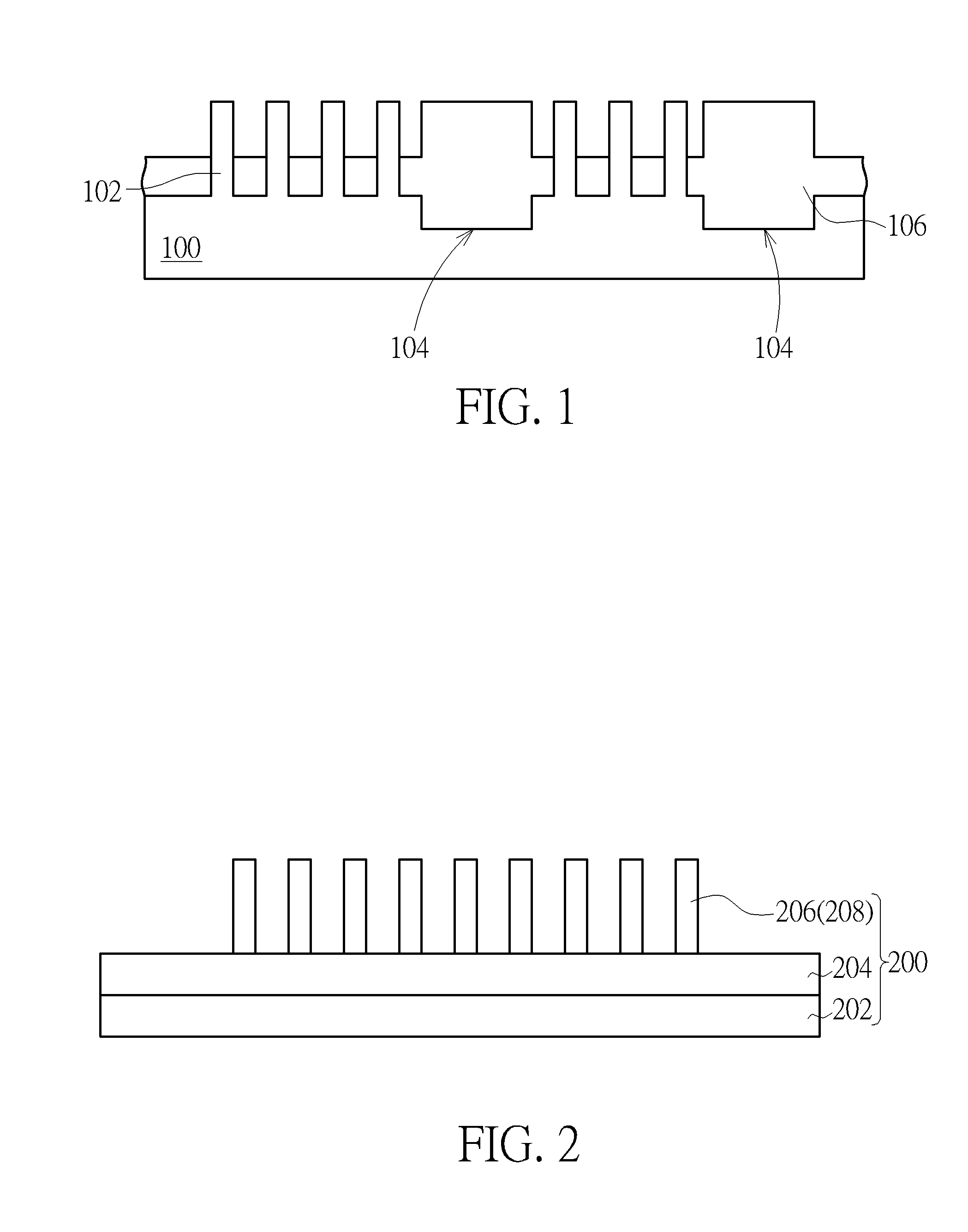Method of fabricating semiconductor device
- Summary
- Abstract
- Description
- Claims
- Application Information
AI Technical Summary
Benefits of technology
Problems solved by technology
Method used
Image
Examples
Embodiment Construction
[0015]To provide a better understanding of the present invention, preferred exemplary embodiments will be described in detail. The preferred exemplary embodiments of the present invention are illustrated in the accompanying drawings with numbered elements.
[0016]Please refer to FIG. 1 through FIG. 7, which illustrate a method of forming a semiconductor device according to a first exemplary embodiment of the present invention. As shown in FIG. 1, a substrate 100 is provided, wherein the substrate 100 is a bulk substrate such as a silicon substrate, an epitaxial silicon substrate, a silicon germanium substrate, a silicon carbide substrate or a substrate made of semiconductor material, but is not limited thereto. A mask layer (not shown) is formed on the substrate, wherein the mask layer includes a pad oxide layer (not shown) and a nitride layer (not shown) located on the pad oxide layer. A photolithography process is first performed to pattern the mask layer for forming a patterned pad...
PUM
 Login to View More
Login to View More Abstract
Description
Claims
Application Information
 Login to View More
Login to View More - R&D
- Intellectual Property
- Life Sciences
- Materials
- Tech Scout
- Unparalleled Data Quality
- Higher Quality Content
- 60% Fewer Hallucinations
Browse by: Latest US Patents, China's latest patents, Technical Efficacy Thesaurus, Application Domain, Technology Topic, Popular Technical Reports.
© 2025 PatSnap. All rights reserved.Legal|Privacy policy|Modern Slavery Act Transparency Statement|Sitemap|About US| Contact US: help@patsnap.com



